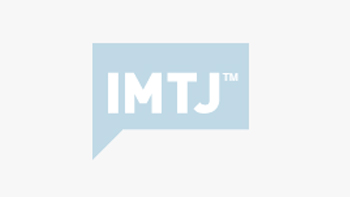Despite being a pioneer in medical tourism, India’s central government failure to promote the sector, and the complex medical visa system that puts off medical tourists, is pushing the country into becoming an also-ran in medical tourism.
Despite being a pioneer in medical tourism, India’s central government failure to promote the sector, and the complex medical visa system that puts off medical tourists, is pushing the country into becoming an also-ran in medical tourism.
Whilst the governments of competing destinations spend time and money in promoting medical tourism, official apathy and bureaucracy in India threaten to reduce rather than increase numbers.
Doctor Prathap C. Reddy, the cardiologist who built the Apollo hospital chain in India is seeking overseas growth as the nation’s visa policies drive medical tourists to rivals. Reddy has told several Indian newspapers, “Growth in the number of visitors seeking treatment for heart ailments, cancer and orthopedic surgery is falling short of estimates as India’s special visa for patients forces them to visit an immigration office. India is losing clients to Singapore and Thailand as visa rules and greater awareness of drug-resistant germs that spread from the South Asian nation scare away patients. Government has not just neglected medical tourism, it has done everything to ruin our prospects of becoming a tourism center. I once said India should become the global health-care destination – now I am swallowing those words. It could grow ten-fold in the next five years, if only the government would facilitate it, the way other counties have.”
In theory, anyone who wants to go to India for treatment must apply for a special medical visa. In practice, many just use normal visas, but then run the risk of not being allowed re-entry if they need more treatment. Anyone going to India for medical care has not only to get one in advance, through the labyrinth of the Indian civil service, but in India, before treatment, the patient has to personally attend a local police/ administration office which can be many miles from the hospital and may have erratic opening hours. The visa is not available to people from many African countries.
Finding that the numbers and profit from inbound medical tourists are offering lower returns than overseas investment means that Apollo Hospitals is considering building or investing in hospitals in Indonesia, Cambodia and Tanzania. Apollo forecasts the number of overseas patients seeking treatment at its hospitals in India will increase from 65,000 in 2013 to 80,000 by 2014, which is still only a small percentage of total patient numbers. Fortis Healthcare also supports medical tourism, but is another group seeing more potential and profit in hospitals outside of India. Vishal Bali of Fortis Healthcare says, “Medical tourism to India will increase if the nation allows faster clearance for patients through immigration points, and guarantees the processing of medical visas within 24 hours.” Fortis attrcats 1,000 international patients a year.
Although it is often claimed that India attracts millions of medical tourists, various sources suggest that the real figure is now between 250,000 and 350,000.
After Dr.Reddy’s comments became public, local commentators supported his view:
• “There continues to be little growth of professionalism among medical tourism companies and the hospitals that treat medical tourists.”
• “Many individuals and businesses with little understanding or appreciation of the complexity of the medical tourism industry solicit customers from abroad.”
• 2Understanding of marketing principles that apply to medical tourism is limited. False advertising, lack of patient privacy, and ignorance of safety of medical tourists are widespread.”
• “Care management of medical tourists that protects their safety and good treatment outcomes is virtually non-existent.”
• “The fledgling Indian Medical Travel Association never got off the ground as a force as information on its website has not been updated since 2009 and appears dormant; and no other organization has emerged to take its place.”
• “Individual medical tourists, or medical tourists sent by medical travel companies from abroad, are vulnerable to local doctors, clinics, hospitals and medical travel companies that often take advantage of them.”
• “There is no quality assessment for medical tourism through third party certification of these hospitals, clinics, doctors and medical travel agents.”
• “Hospitals may be moving to health certification, but that does not mean they can deal with medical tourists properly as they may lack translators, customer care and facilities that are acceptable in India but not in other countries.”
• “Medical tourists to India are at risk because there is a general lack of knowledge, experience or understanding among those who treat and care for them about the quality and safety issues to which medical tourists are vulnerable.”








 ©2024 All rights reserved LaingBuisson
©2024 All rights reserved LaingBuisson 


